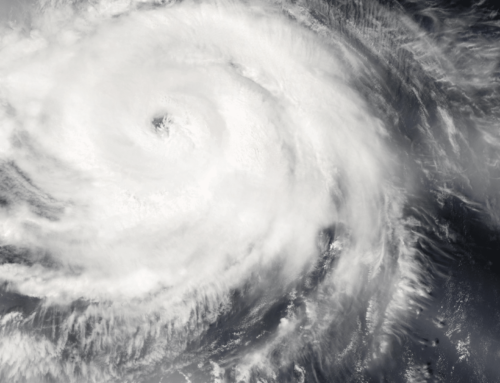For the second year in a row, President Biden proposed zero reforms to the $10 billion federal crop insurance program even though many farmers agree it is ripe for reform. This is a missed opportunity to provide a more cost-effective and equitable farm safety net. On average, taxpayers cover 60 cents for every $1 of insurance coverage. While the program covers a wide range of approximately 130 crops ranging from almonds to walnuts, most taxpayer costs are tied to a handful of crops – corn, soybeans, wheat, cotton, rice, and peanuts. In 2021, premium subsidies for these six crops (totaling $6.7 billion) made up nearly 80 percent of subsidies for all crops ($8.6 billion).
| Crop Insurance Premium Subsidies | 2021 Subsidies |
| Corn | $3,130,272,961 |
| Soybeans | $2,002,048,649 |
| Cotton | $768,856,070 |
| Rice | $88,327,120 |
| Peanuts | $63,803,569 |
| Wheat | $673,572,400 |
| Total premium subsidies for 6 crops | $6,726,880,778 |
| Total premium subsidies for all crops | $8,582,182,713 |
| Percentage for big 6 crops | 78% |
Taxpayers subsidize premiums for both yield- and revenue-based policies, meaning the federal government ensures enrolled producers don’t experience losses due to yield dips (loss of crops) or revenue dips (yield and/or price dips). With some crop insurance policies and add-ons now subsidizing up to 95 percent of expected income, some producers are shielded from experiencing nearly any losses – at taxpayer expense.
Premium subsidies are currently unlimited. While previous budget requests proposed to rein in subsidies (for instance, limiting subsidies to producers earning less than $500,000 in adjusted gross income), these recommendations have not been enacted by Congress.
Other efforts to reduce subsidies for provisions like the Harvest Price Option (HPO) – which automatically increases income guarantees when prices at harvest are higher than anticipated at planting – have also failed. Subsidies like these promote excessive risk taking at the government’s expense when producers are able to shift risks of doing business onto taxpayers. This results in the economics being favorable for producers to plant on marginal land that is more prone to flooding, drought, and other climate risks. Ultimately, the crop insurance program has increased the amount of land under crop production, disincentivized the use of conservation practices that can minimize the risk of crop losses (such as cover crops and less tillage), and increased consolidation in agriculture.
In addition to premium subsidies, taxpayers also subsidize private crop insurance companies to administer and operate the federal crop insurance program. These are known as “Administrative and Operating (A&O) subsidies.” Private insurance agents receive subsidies for writing and servicing policies. Companies benefit as well from underwriting gains, with taxpayers taking on a greater share of losses during years of severe drought and flooding, for instance.
Previous budget requests have proposed to reduce the rate of return private crop insurance companies receive, which has historically been higher than the industry average. Separate efforts to reduce $1.5 billion/year A&O subsidies – not only in President Obama’s budget requests, for instance, but also in recent farm bills – haven’t been enacted.
For a full list of crop insurance reforms proposed in recent budgets, please see the table below.
To improve the cost-effectiveness, accountability, and transparency of the crop insurance program, Congress should work with the Administration to enact responsible and equitable reforms promoting resilience, instead of dependence on the federal government. Conservation should be incentivized instead of barriers being placed in front of producers aiming to do the right thing for the environment, climate, and the long-term viability of their business. And reforming federally subsidized crop insurance to help farmers reduce their risks, rather than simply maximize their income, should be front-and-center.
Select Budget Requests – Savings from Crop Insurance Reforms
| FY2015 Request | FY2017 Request | FY2021 Request | FY2022-23 Requests | |
| President | Obama | Obama | Trump | Biden |
| Reduce subsidy for private crop insurance company rate of return | $1.2 billion | Included in 2015 Bipartisan Budget Agreement but reversed in FAST Act ($3 billion) | $2.818 billion | Not Proposed |
| Reduce A&O crop insurance company subsidies | $2.9 billion | Not Proposed | Not Proposed | Not Proposed |
| Rescind crop insurance pilot program for wild salmon | $10 million | Not Proposed | Not Proposed | Not Proposed |
| Decrease subsidy for catastrophic crop insurance policies | Not Proposed | Not Proposed | Not Proposed | Not Proposed |
| Decrease subsidy for buying highly subsidized crop insurance policies | $3.8 billion | Not Proposed | Not Proposed | Not Proposed |
| Decrease subsidy for buying crop insurance for producers who elect greater price protection (HPO) | $6.3 billion | $16.9 billion | Not Proposed | Not Proposed |
| HPO subsidy reduction of 15% and across-the-board reduction (other than catastrophic crop insurance coverage) of 10% | Not Proposed | Not Proposed | $21.397 billion | Not Proposed |
| Tighten the rules regarding payments for prevented plantings | Not Proposed | $1.1 billion | Not Proposed | Not Proposed |
| Limit crop insurance eligibility to $500,000 AGI | Not Proposed | Not Proposed | $0.652 billion | Not Proposed |
| Eliminate the crop insurance 508(h) program | Not Proposed | Not Proposed | $0.120 billion | Not Proposed |
| Total Proposed 10-Year Savings | $14.2 billion | $18 billion | $25 billion | $0 |










